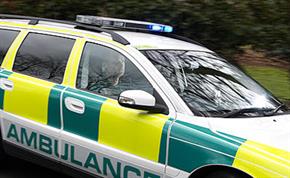
On 2nd March the drug driving law changed to make it easier for the police to catch and convict drug drivers.
It is now an offence to drive with certain drugs above a specified level in your blood, just as it is with drink driving. But the 16 drugs covered by the law aren’t just illegal ones – drugs that we administer like diazepam and morphine are also on the list.
What do we need to do?
For the majority, administering these kinds of drugs will mean the patient is taken into hospital so driving won’t be an issue, but in rare cases the patient might be left at home (if they have refused hospital treatment perhaps, or are safe to be left with advice). So it’s now more important than ever to ensure you advise patients not to drive if you’ve administered these kind of drugs, and document that you’ve done so on your paperwork.
Surely it’s the patient’s responsibility rather than mine?
Yes, it is still a driver’s responsibility to decide whether they consider their driving is or might be impaired on any given occasion. But it’s your responsibility as a prescriber/supplier of the medicine to give the patient suitable clinical advice on serious and common side-effects, for example that it might cause sleepiness and impair driving. Remember, if you’ve advised them of such please document it on the patient care record – if it isn’t written down there’s no evidence that it happened.
What’s statutory medical defence?
If a patient is stopped by the police and investigated for drug driving, they could raise what’s called statutory ‘medical defence’ - used to protect those patients who may test positive for certain specified drugs taken in accordance with the advice of a healthcare professional.
If the police are satisfied that a driver is taking the relevant medicine on the advice of a healthcare professional, and is not impaired in their ability to drive, the police will not prosecute them for this offence.
Where can I get more information?
The Department for Transport has produced a really useful document, Guidance for Healthcare Professionals on Drug Driving, that provides some further information.
From an ambulance service perspective, you don’t need to do anything differently – just ensure that you’re giving the appropriate advice to patients and documenting what you’ve done as normal. But if you have any questions, please leave them as a comment below and we’ll do our best to provide an answer.
Published 21st March 2015